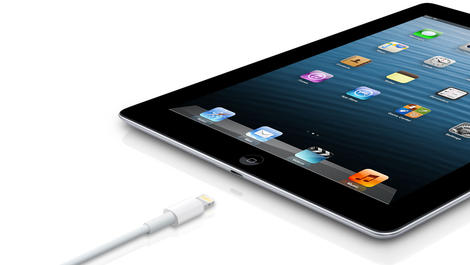Apple : In depth: Apple rumours: How to tell fact from fiction |
| In depth: Apple rumours: How to tell fact from fiction Posted:  The Apple rumour mill never sleeps: while we were oohing and aahing at the iPhone 5S and 5C, rumourmongers had already turned their attention to the next event in the middle of October. iPad 5s! Apple TVs! Fuel-cell powered sexbots! Maybe even an iWatch! Many and perhaps even most of the predictions will turn out to be bobbins, but how can you tell which bits of smoke have fire? Allow us to help. Consider the sourceThat's sometimes harder than it should be in these days of everyone reporting the same thing, often without attribution. But a bit of digging can usually find the source of a specific rumour - and if it turns out to be slideshows4pageviews.com or worse, Digitimes, then it's a good idea to take that one with a pinch of salt. Conversely, if The Wall Street Journal quotes the usual "people familiar with the matter", then Tim Cook's been on the phone. Is an event imminent?The closer to a final release Apple gets, the leakier its supply chain becomes - so apparent spy shots of an iPad 5 taken three days before the iPad 5 event are probably real, whereas ones 'leaked' six months in advance are usually renders.
Is it a render?Renders are like movie stars: unrealistically good-looking, disconnected from reality and made entirely in Photoshop. Drawing pretty things is relatively easy when you don't have to worry about how to build it or get all-day battery life out of it. The drawings might as well be robot unicorns. Is the timescale realistic?Let's say Apple hires an expert in fitness peripherals. Maybe it hires a whole team of them, and sixty watch experts, and opens a building called Jony's Secret iWatch Treehouse. That doesn't mean you'll get an iWatch at the next Apple keynote. An iWatch, if it even exists, won't go from concept to keynote in six weeks: iPad prototypes were kicking about eight years before the device actually shipped. See also: Apple patent applications, which Apple files whether it plans to make them or not.
Does the site know what words mean?"Confirmed!" should mean that the news source has received confirmation of a story from an official or at least a credible source. It does not mean "man on internet thinks it's likely", even if - or especially if - that person is an industry analyst. Are you getting deja vu?In 2011, analyst Gene Munster said that Apple would release a TV. It didn't. He said it'd do it in 2012. It didn't. He said it again in 2013, and now his "conviction is high for a television in 2014." That's not predicting. That's guessing! Is the rumour utterly ridiculous?For our news editor Kate Solomon, the last straw was the iRing rumour, which typified the very worst of Apple rumour-mongering: it was "a five-year-old concept design dreamt up by someone who does not work for Apple, who has no connection to Apple, who, it is entirely possible, has never even seen an Apple product. But then - then - it was cemented by an analyst." Cemented by an analyst! Has Samsung already done it?We don't need to explain this one, do we? Has Jim Dalrymple said "yup" or "nope"?Jim Dalrymple of The Loop is famously well-informed about Apple and if he yups or nopes your favourite rumour, that's the end of it. Then again...One of the reasons we pay attention to Apple rumours is because sometimes, they're right. Earlier this year, TUAW.com took great delight in panning multiple Apple rumours that said Apple was working on a sapphire crystal capacitive fingerprint sensor for the iPhone 5S. Oops! |
| Apple may have to conform when it comes to its chargers Posted:  Apple is the type of company that loves to do things a little differently, but soon that could become illegal in Europe where phone chargers are concerned. A committee within the European Union Parliament voted unanimously this week to create a law that requires all phone makers to use the same type of charger. Tablet chargers could be affected, as well. The internal market and consumer protection committee said the law will cut down on waste from unused chargers, but given Apple is one of the last phone makers not using microUSB, it's clear who would be most affected. The proposal still needs to pass the European Council and be approved by Parliament before the law can be created, so it will still be some time before anything changes (if it ever does). Lightning roundApple introduced its much-hyped Lightning connector with the iPhone 5 in 2012, and it's become the standard for Apple devices since then. The Lightning connector replaced the 30-pin plug that was in use on Apple products for nine years. The Lightning connector is easy to use because it can be plugged in no matter which side is facing up. It also has a smaller footprint, and it charges devices and transfers data more quickly than the old connector. But it made loads of old iPhone and iPod accessories incompatible with newer Apple devices, irritating plenty of Apple users. A switch to the standard of microUSB would likely anger Apple fans further, especially since microUSB, while nearly universal at this point, is inferior to Lightning in most ways. Apple has solved this problem in the past with adapters, but if the law goes into effect it could be forced to rethink its strategy. |
| You are subscribed to email updates from TechRadar: All latest Apple news feeds To stop receiving these emails, you may unsubscribe now. | Email delivery powered by Google |
| Google Inc., 20 West Kinzie, Chicago IL USA 60610 | |


No comments:
Post a Comment